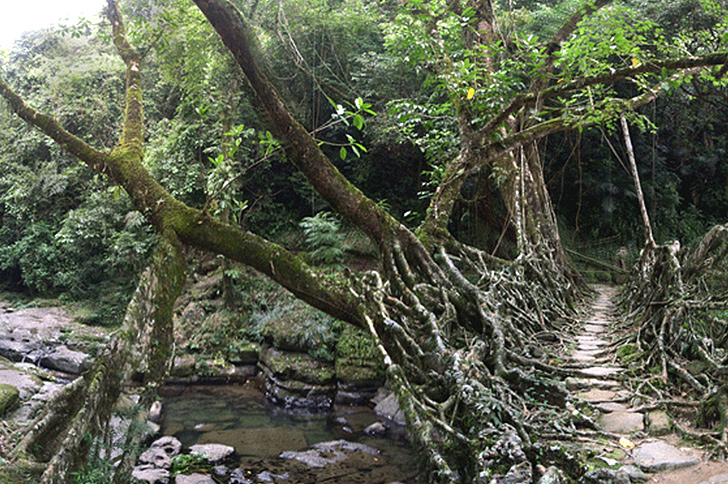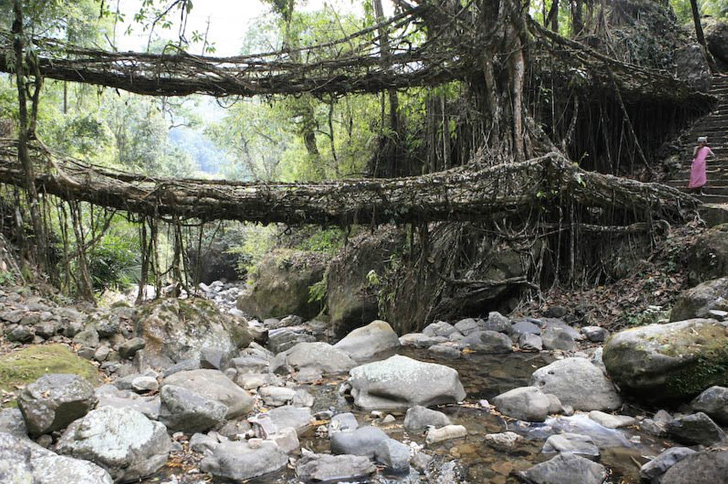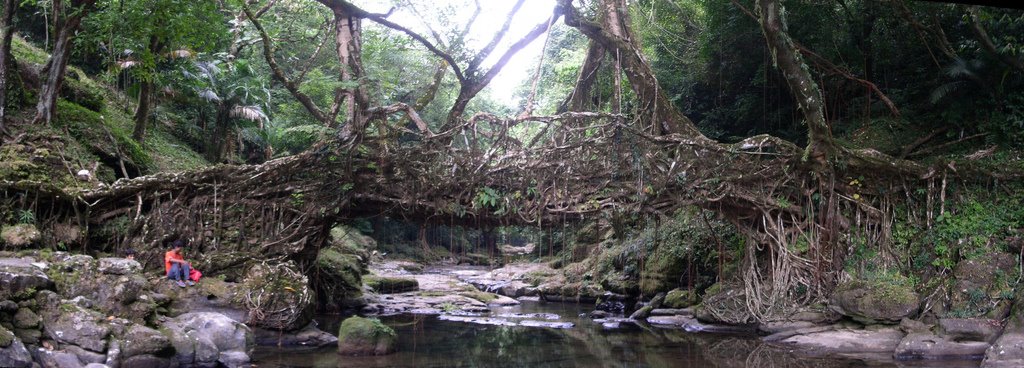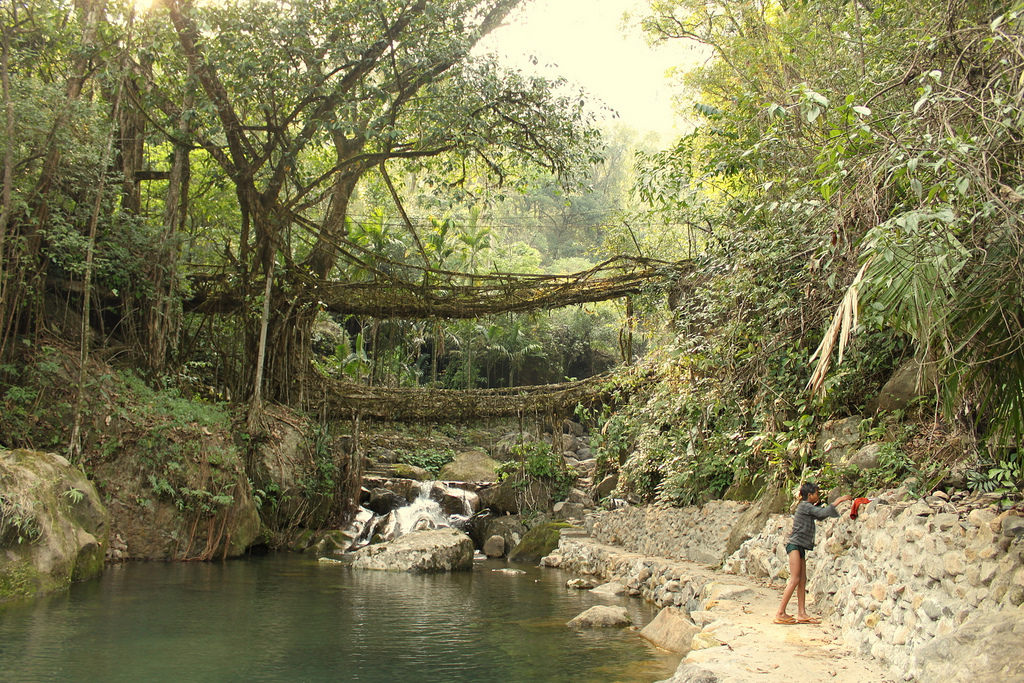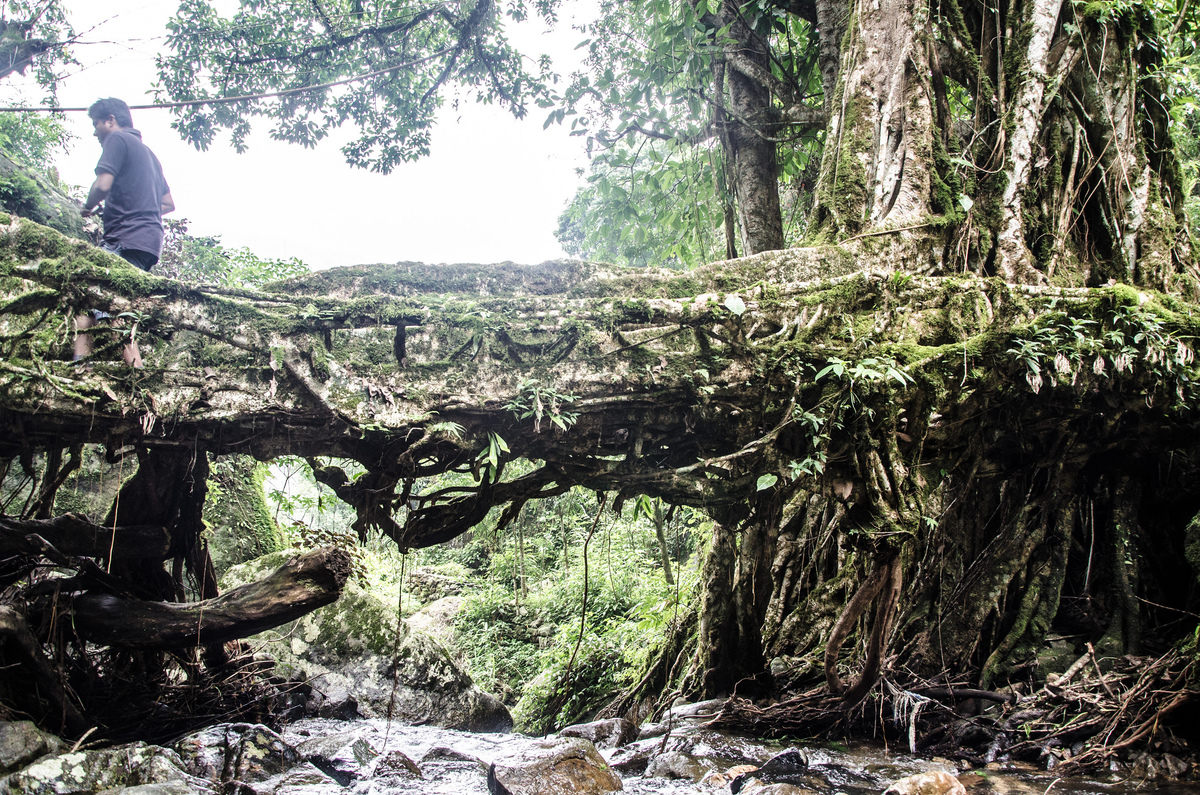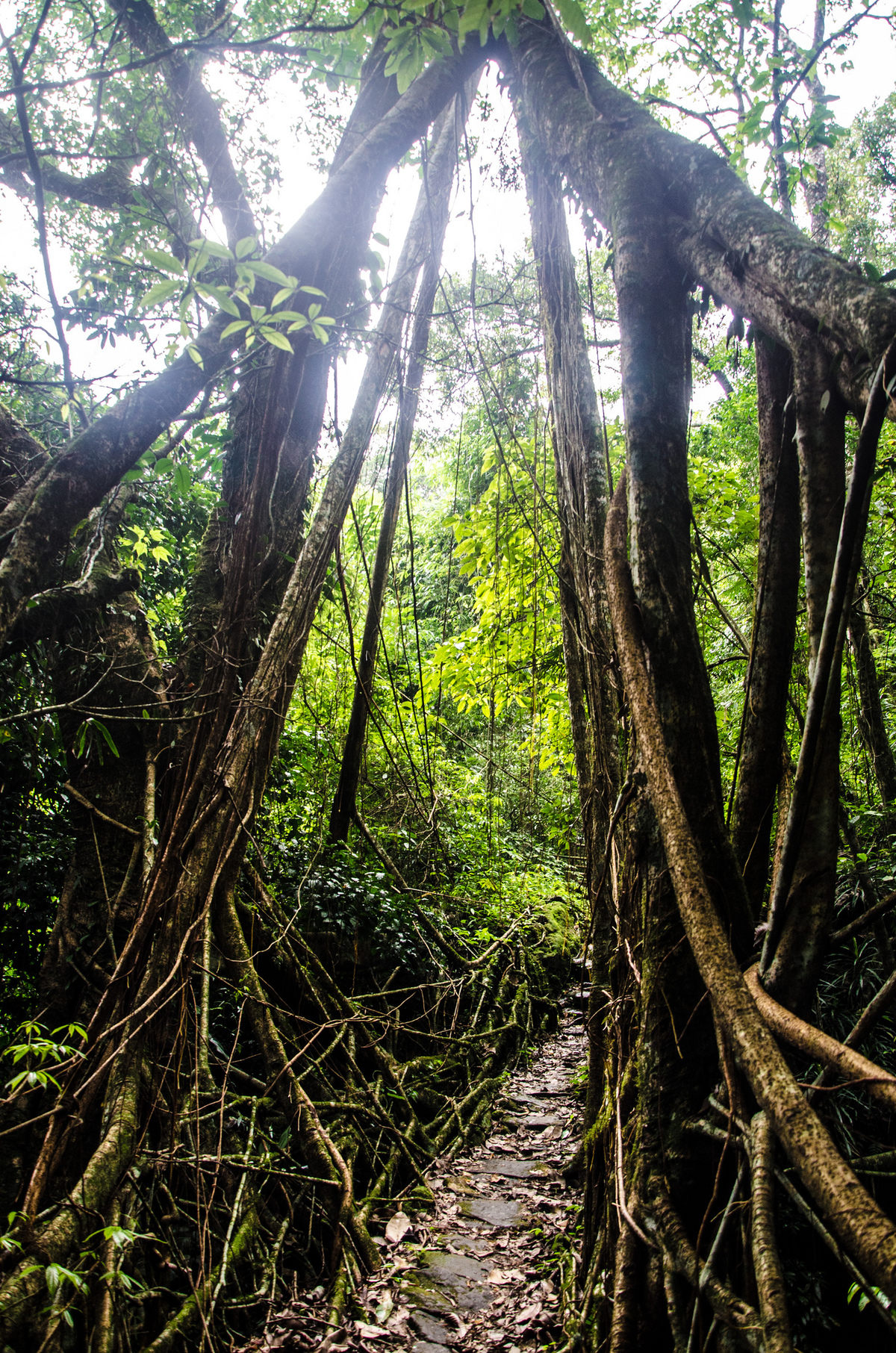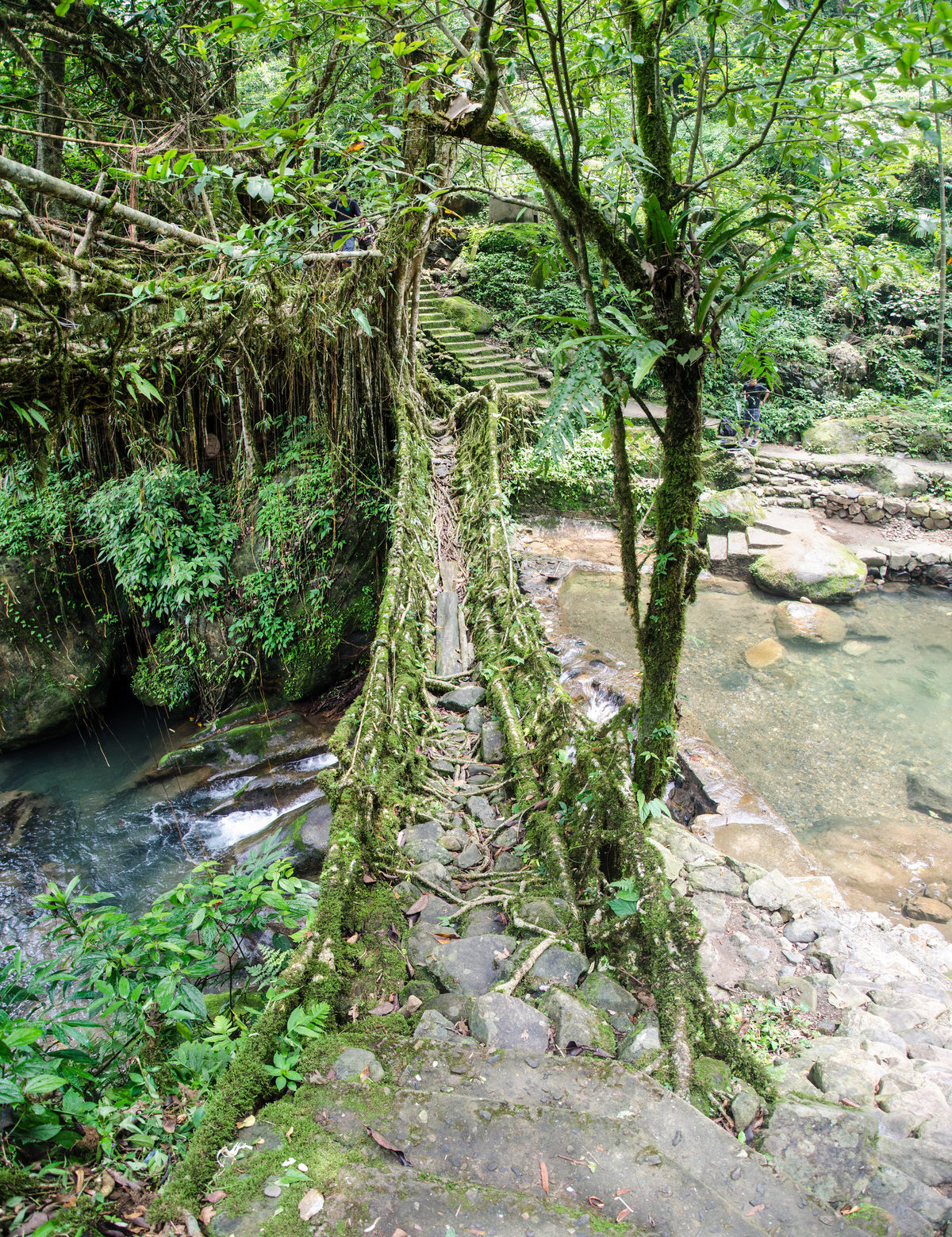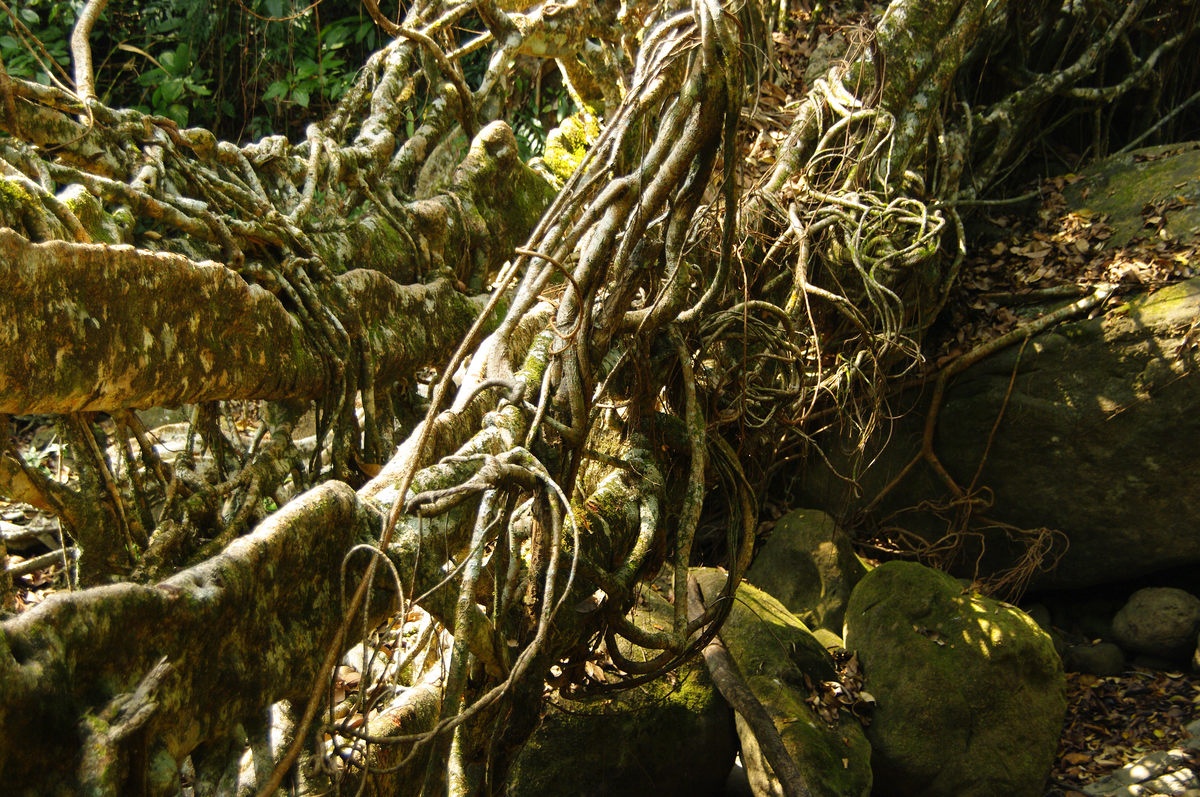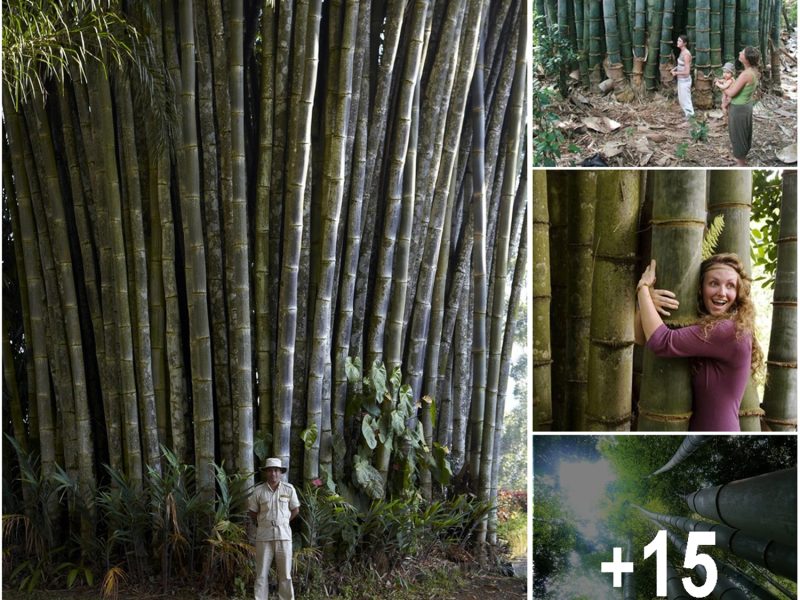In the northeastern state of Meghalaya, India, lies a stunning display of nature’s ingenuity – the living root bridges. These bridges are made entirely out of the roots of the Ficus elastica tree, locally known as the rubber tree. These bridges are not only aesthetically pleasing, but they also serve as a vital means of transportation for the local people, who live in the remote hilly areas of the state.
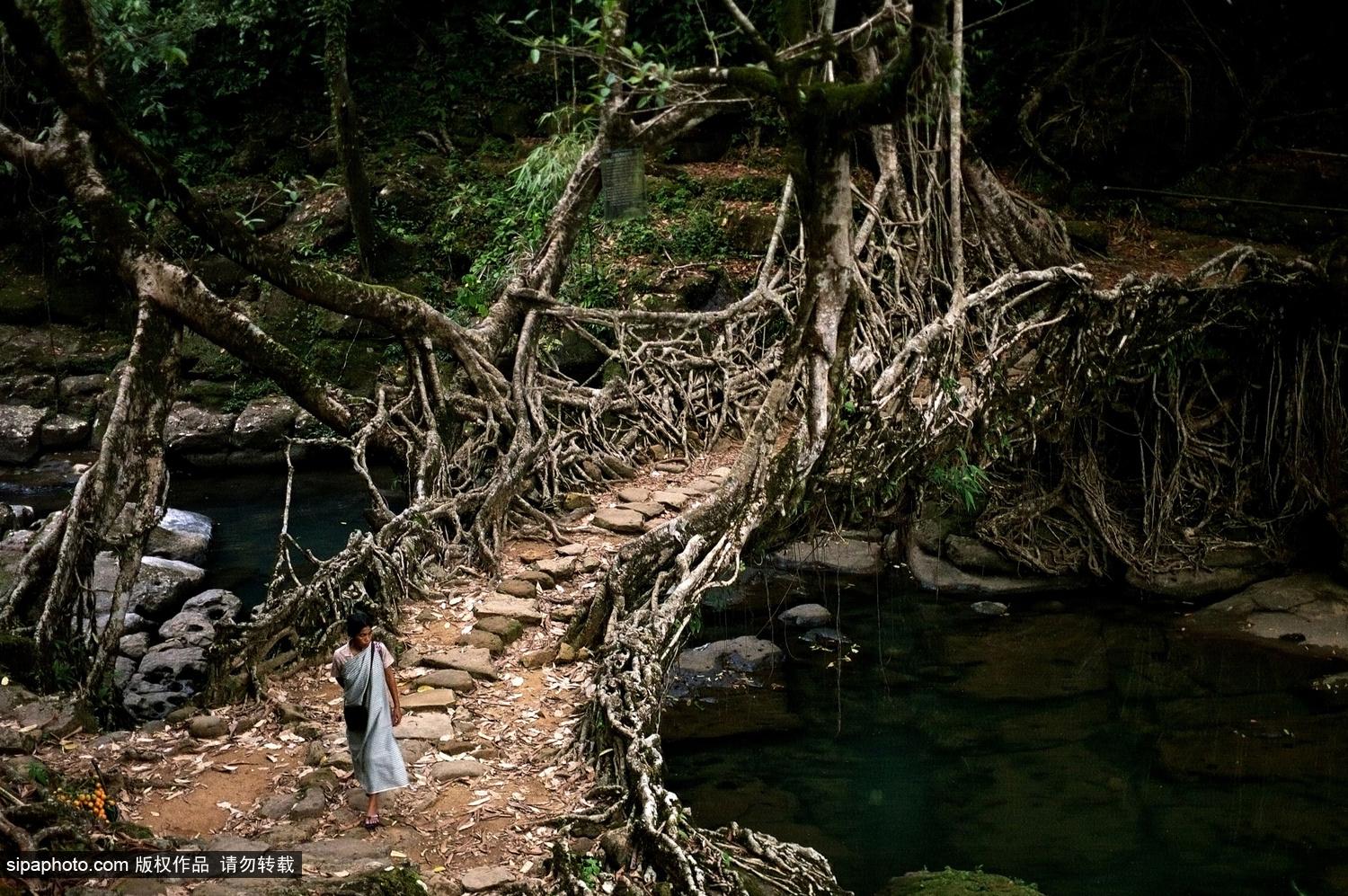
Meghalaya is known for its heavy rainfall, which often causes landslides and makes traditional bridge-building methods difficult. However, the Khasi and Jaintia tribes who inhabit the region have found a unique solution to this problem. They have been creating living root bridges for centuries, using the pliable roots of the rubber tree to create sturdy and durable bridges that can withstand the monsoon rains.
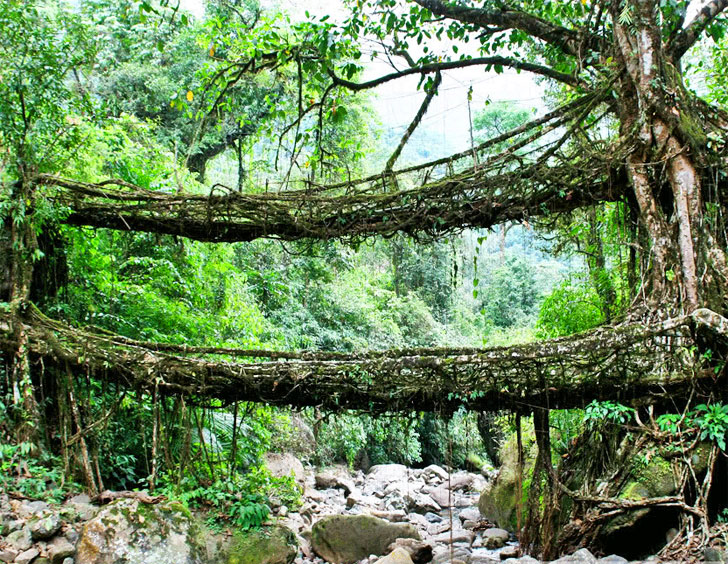
The process of creating a living root bridge is a long and labor-intensive one. The villagers first select a suitable location for the bridge, typically across a river or stream. They then identify a rubber tree with strong roots that can be trained to grow in the desired direction. The villagers then carefully weave and interlock the roots of the tree, directing them across the river or stream, and securing them with stones and other natural materials.
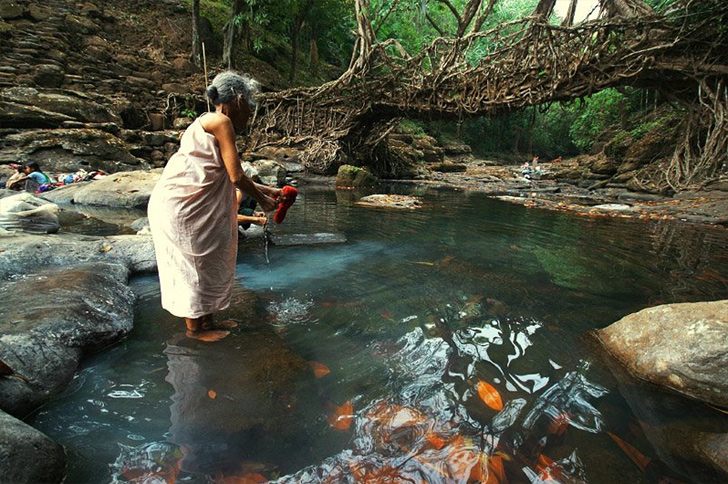
Over time, the roots of the rubber tree grow thicker and stronger, eventually forming a sturdy bridge that can support the weight of several people at a time. The bridges are self-renewing and self-strengthening, as the roots continue to grow and intertwine over the years.

The living root bridges of Meghalaya are not only an engineering marvel but also a testament to the close relationship between nature and humans. The bridges are an excellent example of sustainable architecture that has been in use for centuries and has proven to be incredibly effective, even in the face of extreme weather conditions.
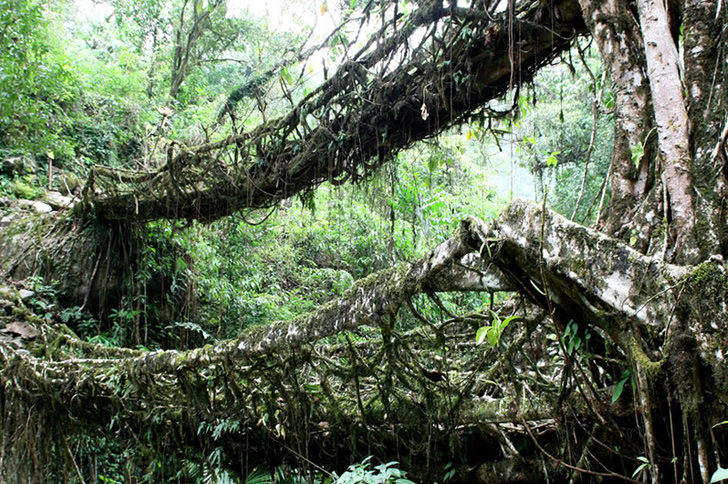
These bridges have become a major tourist attraction in the state of Meghalaya, drawing visitors from all over the world to witness their unique beauty and learn about the traditional techniques used to create them. The bridges also serve as a source of pride for the local people, who have managed to preserve their cultural heritage and traditional practices despite the rapid modernization of the region.
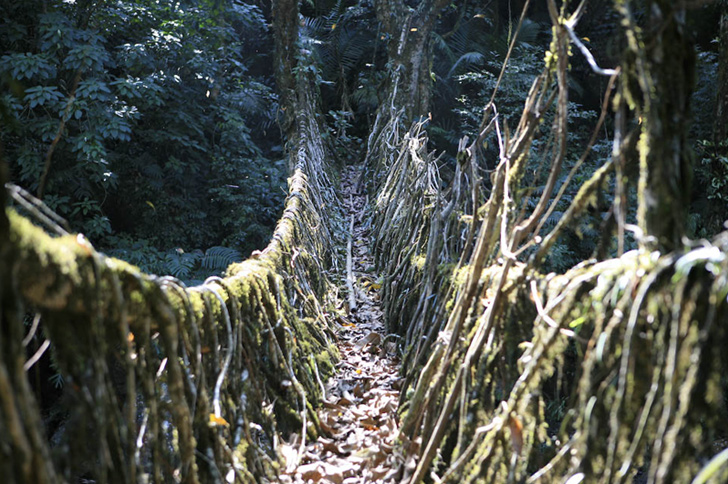
In conclusion, the living root bridges of Meghalaya, India, are a remarkable feat of engineering and a testament to the resilience of the human spirit. They serve as a reminder that, with a little creativity and ingenuity, we can find sustainable solutions to the most challenging problems. These bridges are not just structures; they are living examples of the harmonious coexistence of humans and nature.
